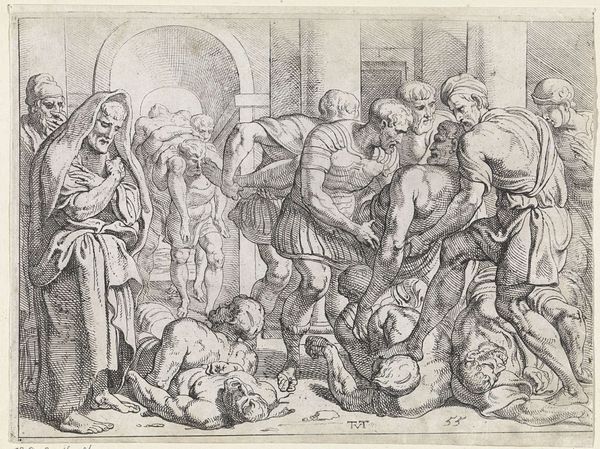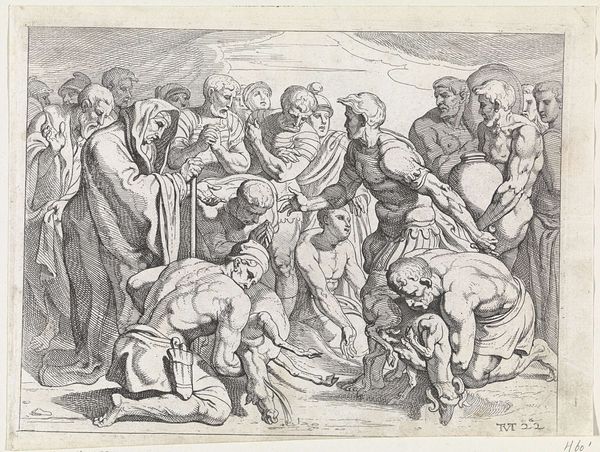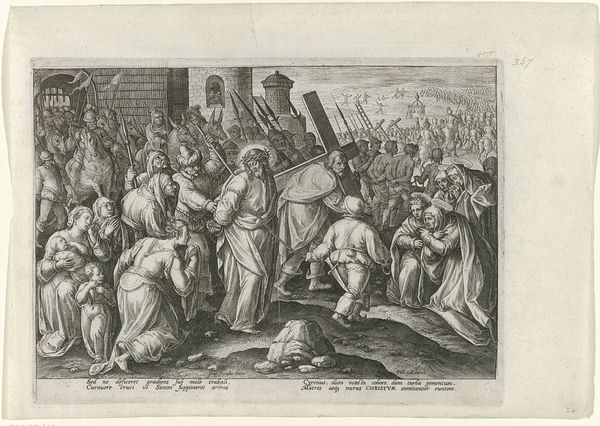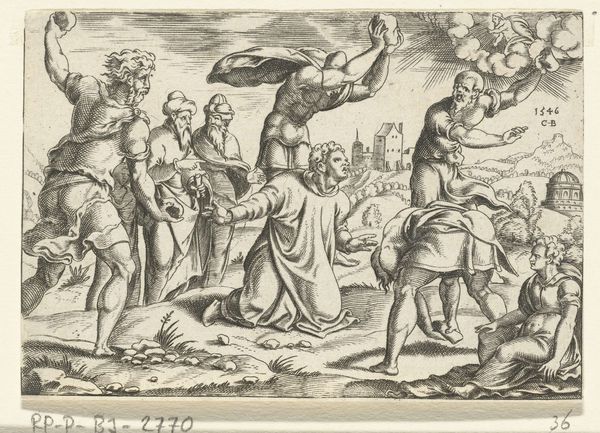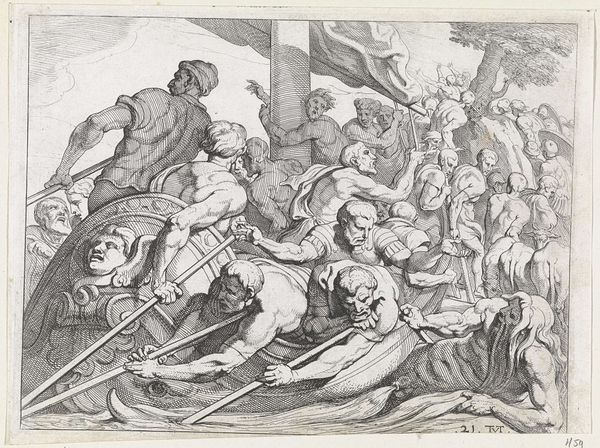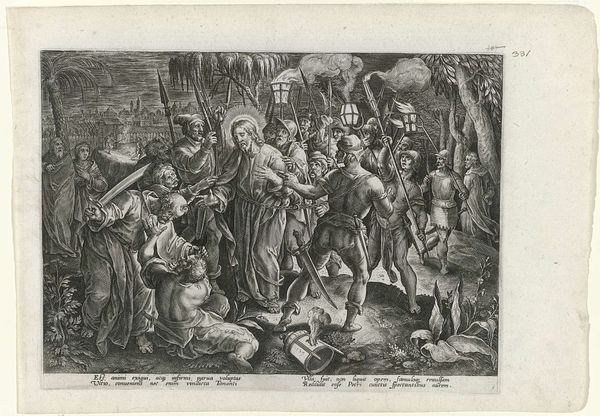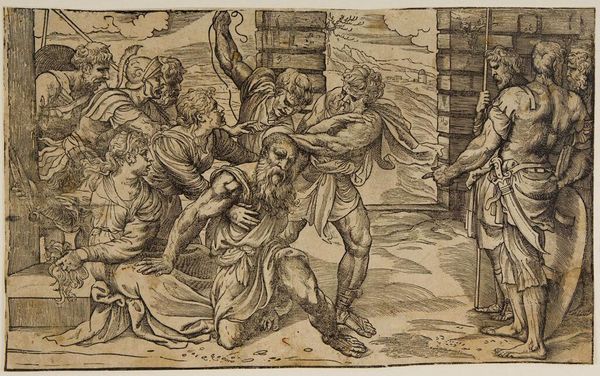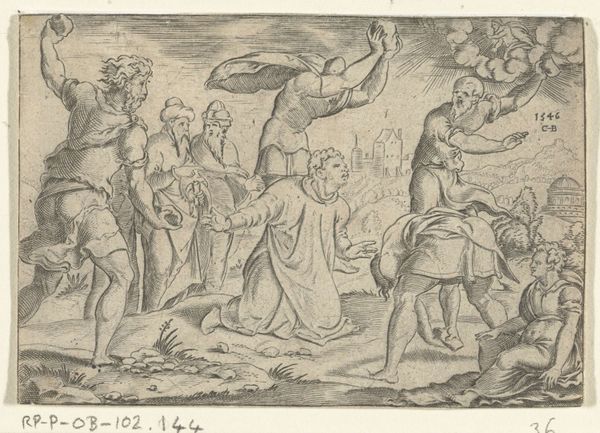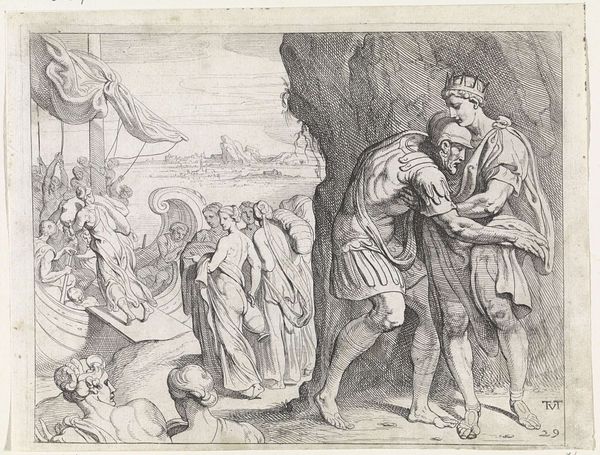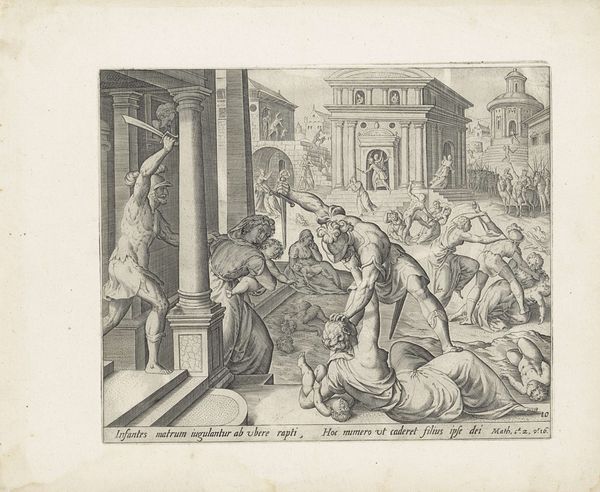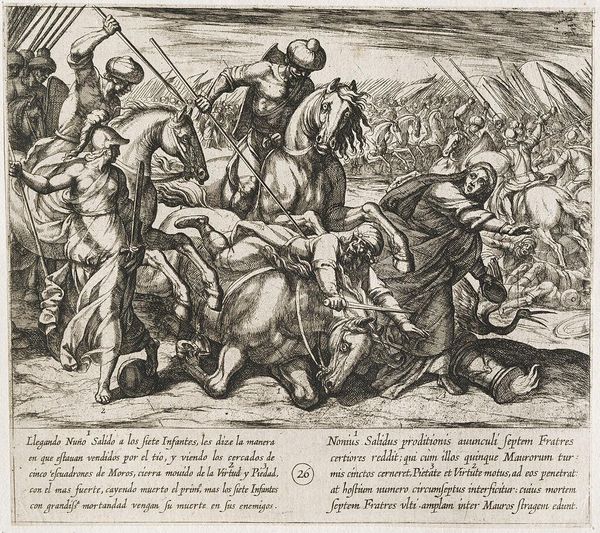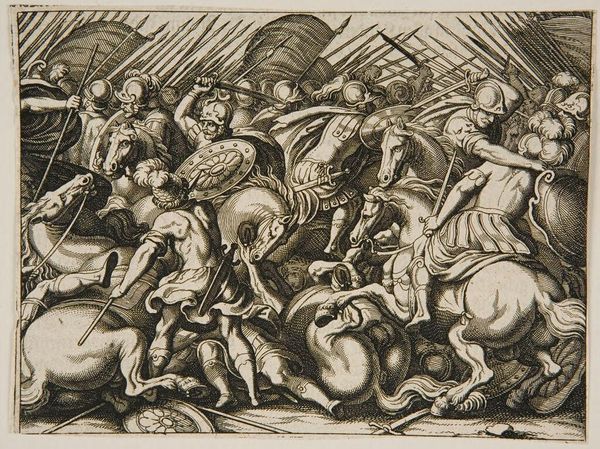
Jupiter en Minerva stoppen de strijd tussen Odysseus en de Ithacanen 1632 - 1633
0:00
0:00
print, engraving
#
allegory
#
baroque
# print
#
classical-realism
#
figuration
#
history-painting
#
engraving
Dimensions: height 188 mm, width 242 mm
Copyright: Rijks Museum: Open Domain
Editor: This is "Jupiter en Minerva stoppen de strijd tussen Odysseus en de Ithacanen" by Theodoor van Thulden, made between 1632 and 1633. It’s an engraving, and the composition feels very dynamic and crowded. What strikes you most about it? Curator: Well, the first thing I notice is the specific moment Thulden chose to depict. It's not just a generic battle scene, but a culturally charged intervention. Considering the time, 17th-century Europe, the visual vocabulary of classical mythology was still very much used as a powerful way to discuss contemporary political events. How do you see this connection play out in the artwork? Editor: So, you're saying the gods stepping in… it's not just about an old story. Curator: Exactly. It speaks to the concept of divine right, of course, the justification for power. The engraving medium also hints at broader accessibility. This wasn’t just for a palace wall; prints circulated ideas widely, even if literacy was a barrier. Who do you think the intended audience was, and what message was Thulden perhaps trying to communicate? Editor: Maybe he was flattering powerful rulers, comparing them to Jupiter resolving conflicts? It feels very… staged, like propaganda almost. Curator: Yes, it's definitely functioning on a political level, especially within the context of the Thirty Years' War at the time. Propaganda might be a loaded word, but absolutely, the image is constructed to convey a specific viewpoint. Consider also how museums even today present history. Do they not also shape interpretations in specific ways? Editor: That’s a good point. I guess I was focusing on the surface narrative. Seeing the layers of context definitely changes how I understand it. Thanks! Curator: Indeed. Reflecting on art is always an evolving exploration, and bringing different historical and societal lenses broadens our understanding of how these pieces resonated back then and still affect us now.
Comments
No comments
Be the first to comment and join the conversation on the ultimate creative platform.

